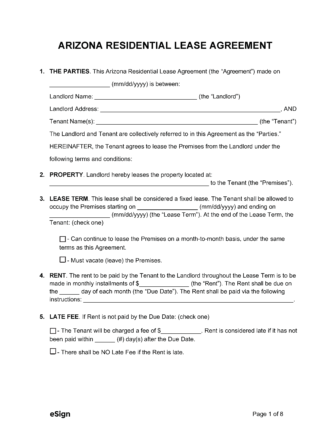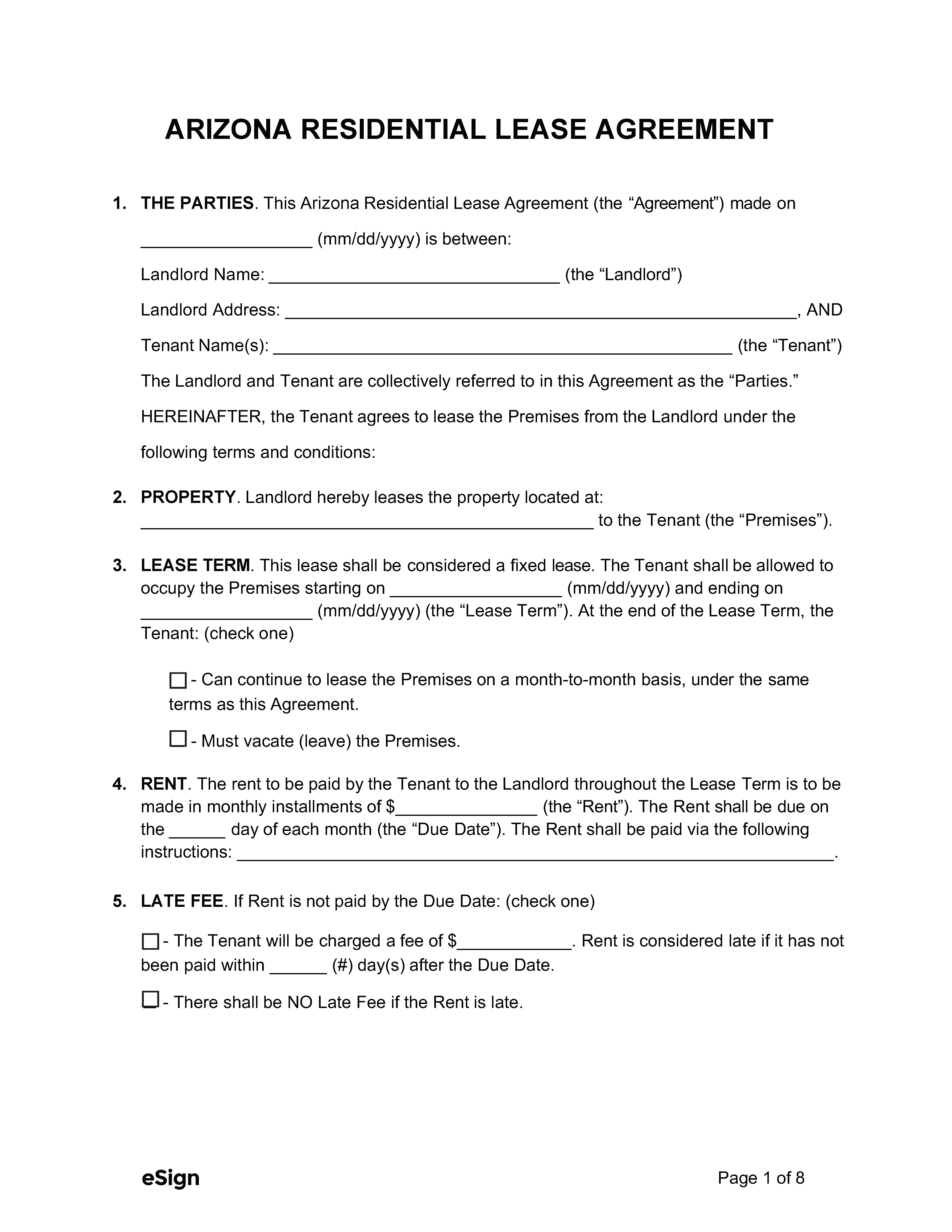Rental Application – Completed by tenants so a landlord can collect their employment and rental history to determine suitability for tenancy.
Required Disclosures (9)
- Bed Bugs – Landlords must provide educational materials to tenants about bed bugs and how they spread.[1]
- Fees – The landlord must state the purpose of all non-refundable fees or deposits in writing.[2]
- Landlord Information – The names and addresses of the person authorized to manage the premises and the owner or person authorized to act on their behalf must be provided to tenants.[3]
- Landlord-Tenant Act – When tenancy commences, the landlord must inform new tenants in writing that the Arizona Residential Landlord and Tenant Act is available on the Department Of Housing website.[4]
- Lead-Based Paint Disclosure (PDF)- If the property was built before 1978, this form must be provided informing tenants that the property may have lead-based paint.[5]
- Move-In/Move-Out Checklist (PDF) – A landlord must provide tenants with this form so the condition of the space can be compared at the start and end of tenancy.[6]
- Pool Safety Notice (PDF) – The landlord must provide this notice to tenants explaining pool safety and responsibility if the property has a swimming pool.[7]
- Taxes – If there is a transaction privilege tax levied on residential rent and the municipality changes the percentage of that tax, the landlord may increase rent with at least thirty (30) days’ notice to the tenant (as long as this is also stated in the rental agreement).[8]
- Utility Charges – If the landlord charges separately for utility services, the rental agreement must include a list specifying those utilities and disclosing any administration fees.[9]
Rent Grace Period
There is no rent grace period in Arizona. Unless the parties agree otherwise, the tenant must pay rent at the beginning of the month.[12]
Landlord Resources
- Arizona Residential Landlord and Tenant Act – Title 33, Ch. 10
- Handbook (Guide) – Arizona Tenants’ Rights and Responsibilities Handbook

